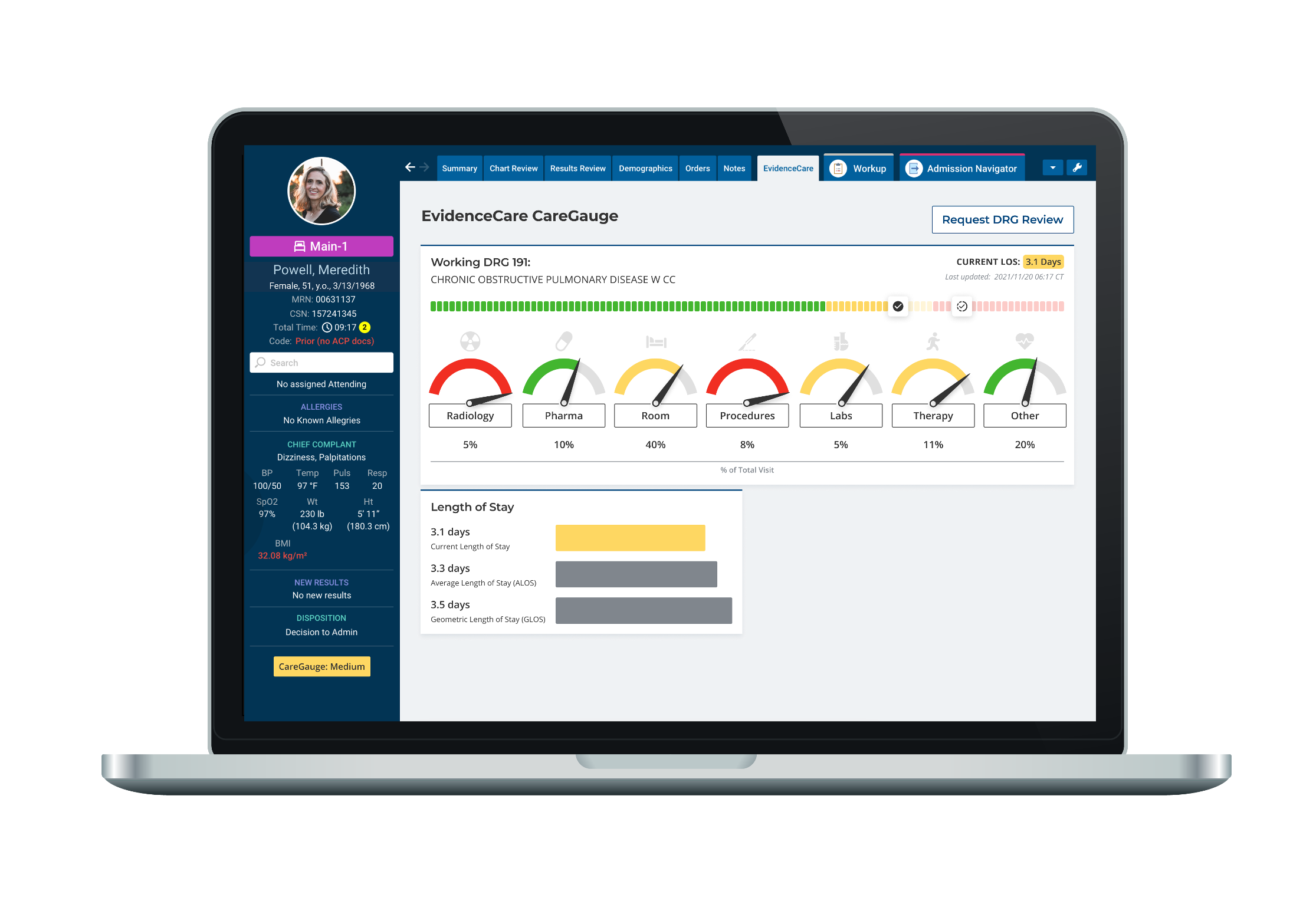Care Variation
The US healthcare system frequently focuses on care variation. Certain types of care variation significantly reduces the quality of care for patients and costs hospitals millions of dollars every year.
There is variation in all areas across the whole healthcare system. While significant energy has gone into reducing variation, the results have not been seen at a patient, or even hospital level, quickly enough.
There is not a one size fits all solution for variation in medical practice and implications for quality. Unwarranted care variation needs to be reduced in all medical care while considering that there will often be warranted care variation in healthcare to deliver true patient-centered care. Riffing on the often used quote of W. Edwards Deming, uncontrolled variation is the enemy of quality care for patients who need it most.
Most plans hospitals have implemented lack the ability to define, measure, and understand how variation is needed in healthcare, just not unwanted variation. Unwarranted variation can lead to overuse, misdiagnosis, and overtreatment of patients. It also causes poor value for the healthcare system.
Warranted Vs. Unwarranted Variation
There are key differences between warranted care variation and unwanted care variation.
Warranted Care Variation
Warranted variation in healthcare is unavoidable if you want to care for your patients. This type of variation in care is justified because patients may have the same ailment but need to be treated differently due to health circumstances, symptoms, characteristics, or personal circumstances.
This practice is desirable in a healthcare setting as it gives patients the exact treatment they need. Also, shared decision-making drives warranted variation, as making correct care decisions involves balancing expertise with evidence. Sometimes, that evidence comes from various sources within a hospital or outside of a hospital.
Unwarranted Care Variation
In contrast, unwarranted care variation does not focus on the appropriateness of the care but rather on informed judgments. It costs the healthcare system millions each year.
Unwarranted care variation is using healthcare services that cannot be explained by a patient’s aliment, preferences, or medical evidence. Patients are given a course of treatment that does nothing to better their ailment or is unnecessary or costly based on the patient’s condition and best practice.
Examples of Variation in Healthcare
Many doctors practice variation in healthcare. It allows them to personalize treatment based on a patient’s unique pathology and preferences.
Variation, while given a bad name, is not entirely detrimental to the quality of care.
There are several common causes of variation in healthcare. Care variation examples can be due to racial and socio-economic differences and the differences in symptoms among patients.
Warranted Variation Examples
A warranted variation example might include any of the following:
-
- Fears that a patient may not be competent enough to describe their symptoms, leading to a need to obtain additional diagnostic measures that can potentially capture more information than the patient is relaying
- Concerns over the potential financial impact that a treatment or diagnostic method may have on a patient lead to a need to embrace alternative approaches
- External factors in the hospital, such as a drug shortage or an ongoing pandemic
Unwarranted Variation Examples
An unwarranted variation example could be:
-
- Placing patients on oxygen in the ED without a specific indication or in the Operating room (pain meds on board or patient is hyperventilating but does not “require” oxygen). This increases utilization of resources and cost of care and can also increase LOS (length of stay) if the patient is thought to have needed the oxygen, and it takes time to rule out if the patient actually has medical necessity.
- Doing routine “daily” labs, when patient is stabilized. This causes unnecessary “pokes” (patient dissatisfier) and increased cost of care.
- Duplicating studies that would provide the same information such as: Ordering carotid dopplers to evaluate plaque causing a stroke, and then ordering a CT head/neck angiogram, which is an extended study in addition to the carotids that where ordered. The alternative is to simply order the second or not do a redundant Head and Neck CT. This makes the carotid dopplers an unnecessary and redundant study.
- Getting a PET scan as an inpatient, when that information is not necessary for the diagnosis of cancer and can be done with less expense as an outpatient.
These unwarranted variation in healthcare examples give insight into an unstable and unpredictable process. It is caused by various factors outside the medical diagnostic process and can be an inefficient use of time and resources.
Reducing this type of variation will lower the number of resources and outdated care practices. Also, clinicians should strive for standardization to help decrease the length of stay, where ultimately, patients are being exposed to excess medical treatment and increasing their safety risk. In turn, healthcare will be streamlined and made more efficient overall with a focus on reducing variation.
Understanding the difference between unwarranted and warranted variation in care, where it originates from, and why it is so prevalent are the first steps in eradicating unnecessary variation. This variation reduces the quality of patient care and costs health systems a vast amount of money that could otherwise be spent on innovative new treatments.
These examples of variation in healthcare are just some of the more commonly seen in modern care facilities. Variation can be seen in many aspects of medical care worldwide.
Care Variation Reduction
Reducing care variation in the healthcare system should be a primary goal of any medical facility. But as previously discussed, variation is not-so-straightforward in its classification and description. While it is known for reducing the quality of healthcare, there are way grey areas that come with variation.
Care variation primarily describes the varying levels of care created when physicians use a range of treatment methods that are outdated, experimental, or not standard medical practices. If the goal is reducing healthcare variation, the hospital must determine the source of unwarranted variation. Then prevention methods for this variation need to be created and implemented health system-wide to every treating clinician.
“People say that the most expensive piece of medical equipment is the doctor’s pen. It’s not that we make all the money. It’s that we order all the money.” -Atul Gawande
Targeting unwarranted variation and any differences between standard healthcare practices throughout a facility will increase the level of quality care that each patient will receive.
Benefits of Reducing Variability
There are several benefits to reducing variability in healthcare, including:
-
- Patients will receive a standardized diagnostic and treatment path based on an extensive knowledge base and increased evidence-based treatments or best practices.
- Positive outcomes for practitioners will increase as they will have more precise medical paths to follow.
- Less unwarranted variation substantially reduces costs for medical centers.
- All patients receive better care, making them happier and more relaxed receiving treatment with the hospital.
Care variation reduction can be easily implemented as long as everyone within the health system understands that doctors are still the ultimate decision-makers, and that the goal isn’t to remove their clinical judgment but to focus on unwarranted variation in real-time. By understanding how variation can affect a hospital’s overall quality of care, top management and medical leaders can implement procedures to tackle it.
How To Reduce Care Variation
Many healthcare executives have repeatedly suggested ways to reduce care variation. Reducing variation means better healthcare for the whole population.
Establish Inconsistencies
When you have determined where the unwarranted variation stems from, you can establish inconsistencies in diagnostic and medical treatments. To discover this, a high amount of information will need to be gathered. An innovative and intuitive software tool should be used to make this process easier and help you ask the correct questions.
Questions must be asked to the medical providers dealing with patients daily. For example: “How can this process be evaluated to reduce variation?”
From there, you can start to reduce variation as you have critical information from the people who carry out medical care every day.
Follow Specific Steps for Process Improvement
Reducing variation during process improvement requires these specific steps:
Step 1: Identify what needs to be improved in the overall healthcare facility, including training, equipment, and a standardized medical approach.
Step 2: Identify any problems that may cause improvements to be blocked or implemented incorrectly.
Step 3: Establish how different races, economic situations, and social backgrounds affect variation in medical care.
Step 4: Determine which sectors of the healthcare facility have the most variation and establish the reason or methodology behind so many medical staff using different processes to treat patients.
Step 5: Use variation reduction data tools like EvidenceCare’s CareGauge to eliminate waste by understanding the variability of other doctors in your hospital. It will lead to better awareness and decision-making.
There are many benefits of reducing variation in a process, including:
-
- Increasing patient satisfaction
- Reducing overall costs for hospital’s who are already struggling with margins
- Improving the healthcare facilities’ reputation to attract more investment.
Care Variation Software
Using innovative care variation software such as CareGauge is essential in establishing where the incidents of variation occur within your healthcare facility. It can help you reduce and hopefully eliminate variation. The key is that it’s not another invasive software for already burdened doctors, but a guide to help them understand the complete picture and provide insight into reducing variance.
Care variance software, if implemented correctly, will achieve the following:
Insight – Care variance software will provide insight into treatment plans and medical orders when integrated with the EHR system.
Real-Time Overview – CareGauge will give physicians a real-time view of care utilization data compared to their peers. Factors like the average length of stay for a patient and what typical tests are ordered can be analyzed.
Feedback – Care variance software also gives immediate feedback on how variance can be reduced by analyzing the costs of patients, treatments, drugs, labs, and more.
Care variance software empowers doctors for reducing variance within a hospital that can be determined immediately and implemented quickly. Factors such as reducing patients’ length of stay and ordering fewer diagnostic tests overall will help the quality of medical care increase.
CareGauge, a care variation software, is the solution to reducing overall costs and length of stay for patients. It has helped numerous health systems reduce variation by identifying specific reduction methods. It reduces the need for data analysts as it can analyze a wide range of data and create a customized plan to minimize variance specific to your hospital.
Are you ready to learn more about how CareGauge can reduce care variation in real-time in the EHR?
Contact us today to schedule a customized demo.










